The trek I now relate to you was something which sat looming on my calendar for months. Weather, season, wholesale road closures in two ranger districts … as other trips were plugged and unplugged in modular fashion this was, somehow, the one always sitting immobile and resolute in the maelstrom of scheduling. Sometimes we give our trips names — for any number of reasons — and even those change over time. But not this one. It seemed etched in stone from conception, no matter how I pondered or considered any other incarnation. This was the Dick Smith Brutalis.
It was only when I’d resigned to its supremacy that it gave some yield (I know, I know … the irony of it all). When only one access road remained open in the forest and respective work schedules had given all they could (the real world, ach), a new — albeit less ambitious — permutation of the route finally availed itself to me. And I have to say, after 6 days on the trail, I understand now why it refused to yield ’til that almost comically bitter end. Kizmet, karma, or even a Chumash spirit with a sense of humor, call it what you will. But this is the trip that will define this early season for me and the uber-hund.
The trek began with an easy retread of the Santa Barbara Canyon route. ZK and I had made this trek back in November and were summarily admonished for our temerity with a wicked ice storm upon arrival at the old Madulce Cabin site.

This time around, I am happy to report, the weather was clear and fine, and so ZK and I with the always-game uber-hund and his trusty Marvin at our heels (or vice-versa), headed up the canyon and enjoyed a fine ascent of Heartbreak Hill which didn’t entail any of the muck-clambering of our November traverse.
We arrived at Madulce camp just uptrail from the old station site with some time to spare, and so set about making some improvements to the fire ring, set out our gear, filtered water, and enjoyed some 16yo Lagavulin while the steaks grilled. We knew Bryan Conant — he of the cartographic infamy — was leading a work crew along the Alamar trail the same weekend and that we might bump into him this eve, and so had come prepared with two bottles of single malt instead of the usual single. That meeting didn’t materialize, so like troopers we drank that crew’s share of the uisce beatha as well (dammit, the sacrifice of it all).
The next morn, ZK and Marv headed back down Santa Babara Canyon, and Masha and I endeavored further up the Madulce Trail. There were minor patches of snow along Pine Creek, and it wasn’t until we climbed out of the drainage to regain views of the Cuyama — as well as the cliche snow-capped Sierra Nevada far off beyond the smog of the Central Valley — that we began to encounter heavy treefall in some of the burn zone from the 2007 Zaca Fire. The switchbacks en route to the junction with the Madulce Peak Trail were littered by fallen ponderosa and sugar pine and big cone Douglas-fir, most burnt but some still green in their new angle of repose.
As we’d gotten off to a relatively late start, we eschewed the run up to Madulce Peak this time around, and headed up to Big Pine/Buckhorn Road. A quick mile down to Alamar Saddle and — after finding my mobile had five bars, checking in with home base — we dropped down along the headwaters of the Sisquoc River to Upper Bear Camp.
Upper Bear — though lovely — was quite grown in, and had its share of downed trees as well. The fire ring usually set at the foot of the old concrete stove had been dismantled. We set our camp further down near one of the springs; just room enough for the tarp and bag and stove. One particularly persistent owl sat sentinel in the Incense-cedar above our heads, hooting for much of the night. The area was thick with ladybugs, and in the morning, a pair of jays heckled the uber-hund.
The next morning we headed out of that little corner of the San Rafael Wilderness back to the road, and headed southward up the north flank of Big Pine Mountain. A convergence of sugar, ponderosa, and Coulter pine along with more Douglas-fir — menziesii and macrocarpa both — and big leaf maple made this zone something that would have given even Sudworth pause. The staccato of woodpeckers hammering the fire-blasted boughs of once-great conifers sounded like something from Beirut footage in the 80s. We lunched with a fine view of Samon Peak, and then proceeded through Windy Gap and down those toe-pounding miles to Bluff Station.
I’ll admit that upon arriving at Bluff I was tempted to make it a shorter day and camp there, but knowing the route for the next two days was unlikely to be as navigable, we pushed on to Blue Jay (two miles down Indian Canyon). More treefall impeded our progress just as we approached the camp, which proved a near-forgotten site, featuring but a single stove and surrounded by a copse of fire-torched live oaks. A pair of red-tailed hawks circled in the last light above the bluffs to the east of camp, and Masha and I settled in the grass for another night beneath that Cheshire Cat’s sliver of a moon.
The next day, I’ll admit I wished I’d pushed even further than Blue Jay. While navigable, the final two or so miles to where the Alamar and Indian Creek routes split were choked with wild rose and yet more downed trees. Flagging placed by some intrepid trail volunteers did facilitate our navigation, and to those tireless workers — as always — we were grateful. We took a quick lunch at Pens (sometimes known as Indian Can) camp, and then took that path (literally) less-traveled down Indian Canyon.
Beautiful, but slow-going. We spent the entire day rock-hopping, wading, and scrambling down the ravine of what was once the upper portion of a non-contiguous trail 26W08. We labored to Indian Narrows camp, took a quick breather and I changed out my sodden socks for a fresh pair, and then continued on downstream. It was without question the most beautiful part of the trip, but it was also the most bloodletting, the most tiring, and — at times — the most discouraging. We’re not the speed-hiking types, but even Masha was keen to find more than 20 feet of singletrack.
We didn’t quite make it to Indian Camp that day, but instead guerrilla camped on a sand bar beside the creek. The next day, we finished the rest of the real slog and finally alighted into Indian Camp, where we were surprised to find a new table (the lag bolts gleamed in the morning sun, I kid not) in addition to the older, more “classic” accoutrements of the site.
From Indian Creek, a new set of flagging appeared, and further facilitated our progress along some trail just inside the Zaca fire’s southern perimeter. Once out of the burn zone, we made quick work of the route toward the appropriately-named Meadow camp.
The rest of the day was a steady march; we followed the pass up out of Meadow and down into the Buckhorn drainage, then followed that route to its own convergence with Indian Creek, finally following the lower Indian Creek trail through increasingly-exposed chaparral- and juniper-dotted talus and scree to the Romero-Camuesa Road. Some fascinating geology along this stretch. Just as we crested the last real gap, I spotted the serpentine outcrop Kryptor just below Romero Saddle, its shadow stretching down toward Blue Canyon like a massive sundial in the late-afternoon sun. Our target for tomorrow, and beyond that, the promise of Freebird’s!
Once along the Romero-Camuesa Road, we quickly headed down to Mono camp, and — as this was our fifth and final night on the trail — celebrated with some smoked salmon (for the both of us) and some dark chocolate and a touch more Lagavulin (for me). As the fire was crackling and my insoles, boots, socks and gaiters hung drying beside me, Masha sat upright and locked her ears to the north. I knew company was coming … and indeed, about ten minutes later, a couple who’d backpacked down from Cold Spring Saddle sauntered into camp to occupy the site closest to the debris dam. I reckoned that since ZK and I parted ways the previous Sunday morning, it had been about 80 hours since I’d last spoken to anybody but the uber-hund. I chatted briefly with the pair before they headed off for a headlamp-assisted sojourn to Little Caliente Spring, and then retired for the evening. More owls — and those arroyo toads — made such a (ahem) “symphony” that evening, we move the camp be renamed Rana-Mono-Bubo. Come on guys, let a brother sleep.
The next morning, I was buoyed by the knowledge I’d sleep in my own bed again after six days on the trail, and somehow Masha seemed to also sense a pending rest for her paws. We made great time down those three or so miles of Romero-Camuesa Road to the cut-off up lower Blue Canyon, and enjoyed simply crossing the Santa Ynez River and Escondido Creek rather than having to navigate any length of it has we’d done along Indian Creek the days prior. At Cottam, we took our lunch and met a kindly gent training for a through-hike of the PCT this April (all the best to you, NJ P), and then made the easy trek up Blue Canyon to the connector with the northern-most section of the Romero Trail.
I’ve climbed steeper trails, but I can’t really remember when. Perhaps it was the anticipation with which I’d approached this day, but that final mile-and-a-half out of Blue Canyon back to the road felt like it took forever. Once under the power lines I even resorted to my wife’s iPod — which she’d been kind enough to lend me for this journey — and hit Play. Clearly Providence was with me, for of all the tunes or artists it could have chosen, Mr Jobs’s pack-of-gum-sized sliver of inspiration jolted my brain with the heavy riffs of Bon Scott-era AC/DC. Angus and the boys got me up that hill with greater energy and vigor than any GU, PowerBar, or high-end energy drink could possibly hope.
We nearly jogged onto the road at the top, and lengthened our strides toward Romero Saddle. In short time, a USFS truck came rolling down, and I spent ~20 minutes chatting with one of the personnel stationed down at Pendola Station. He offered some useful insight into the road closures and plans for maintenance in the SBRD, and from there it was only another five minutes or so to the old water tower. I SPOTed out, and rang my beloved on the mobile for a ride home.
Even now, with the prednisone coursing through my veins to keep the wicked poison oak that covers my legs and the backs of my hands from driving me insane, I can sit here hunkered down in the dungeon of maptitude and see a huge line scythe through the Dick Smith Wilderness, highlighted in the color of “done.”
And it looks good!

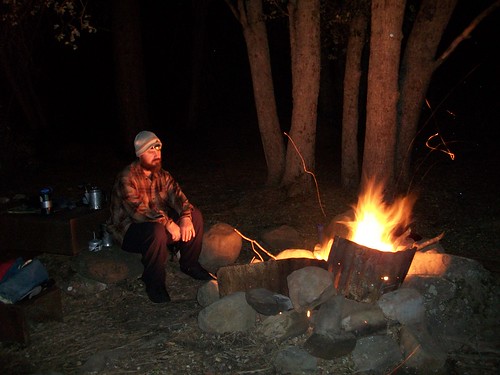

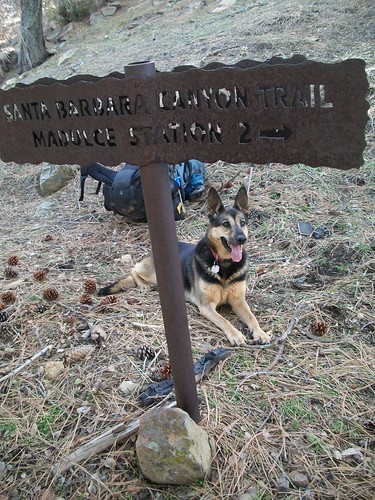
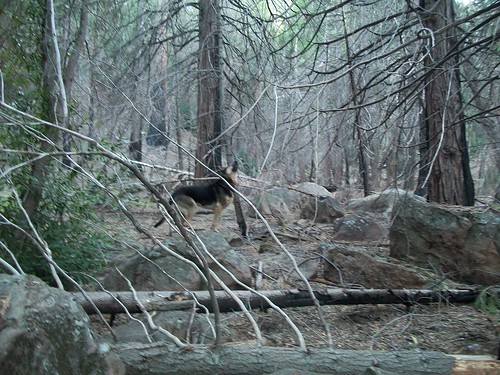
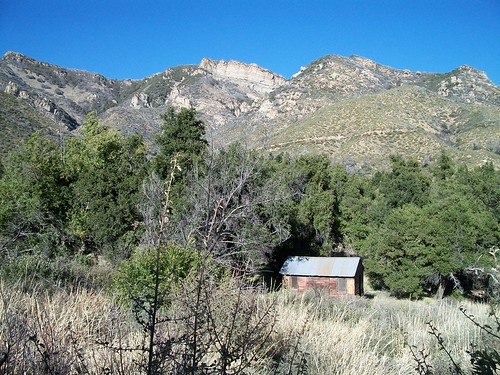
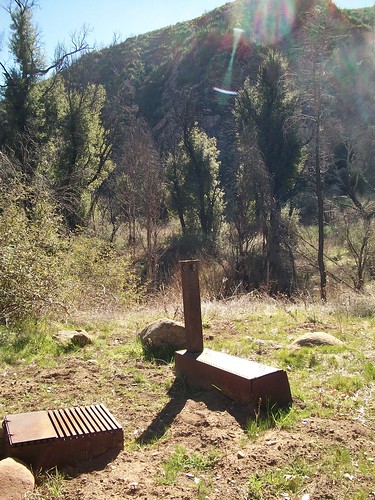
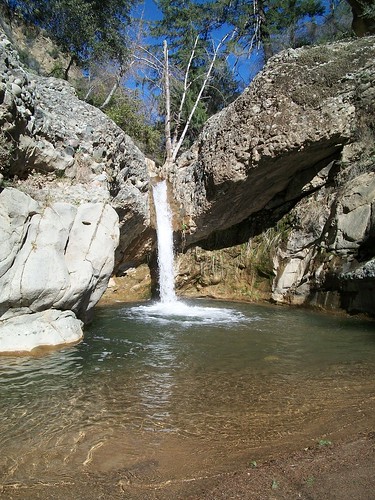
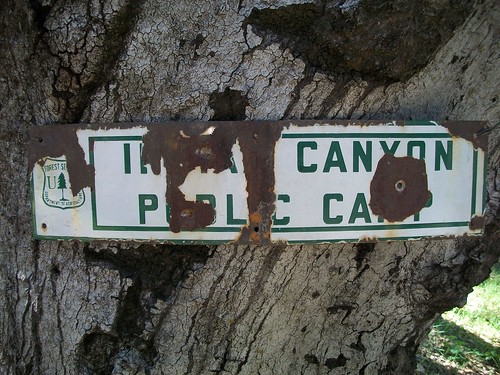
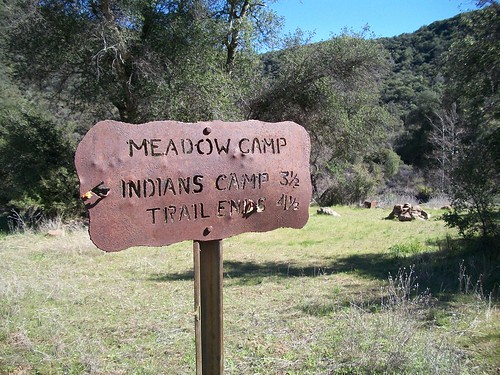
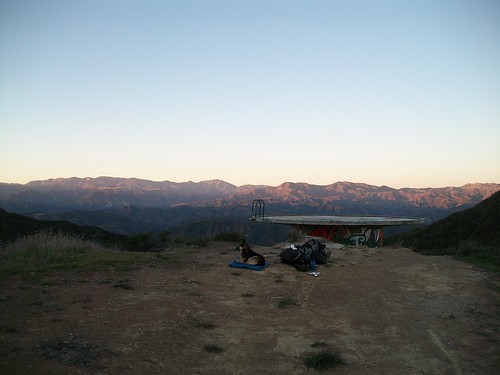

Leave a Reply